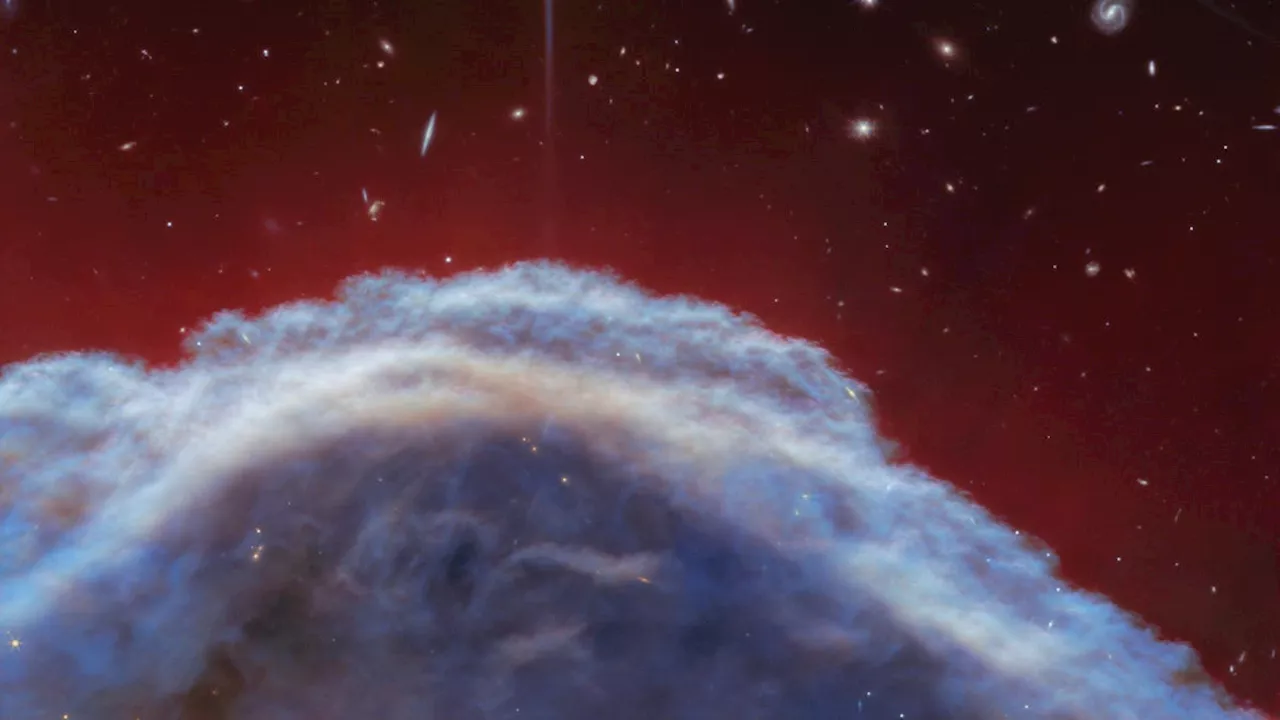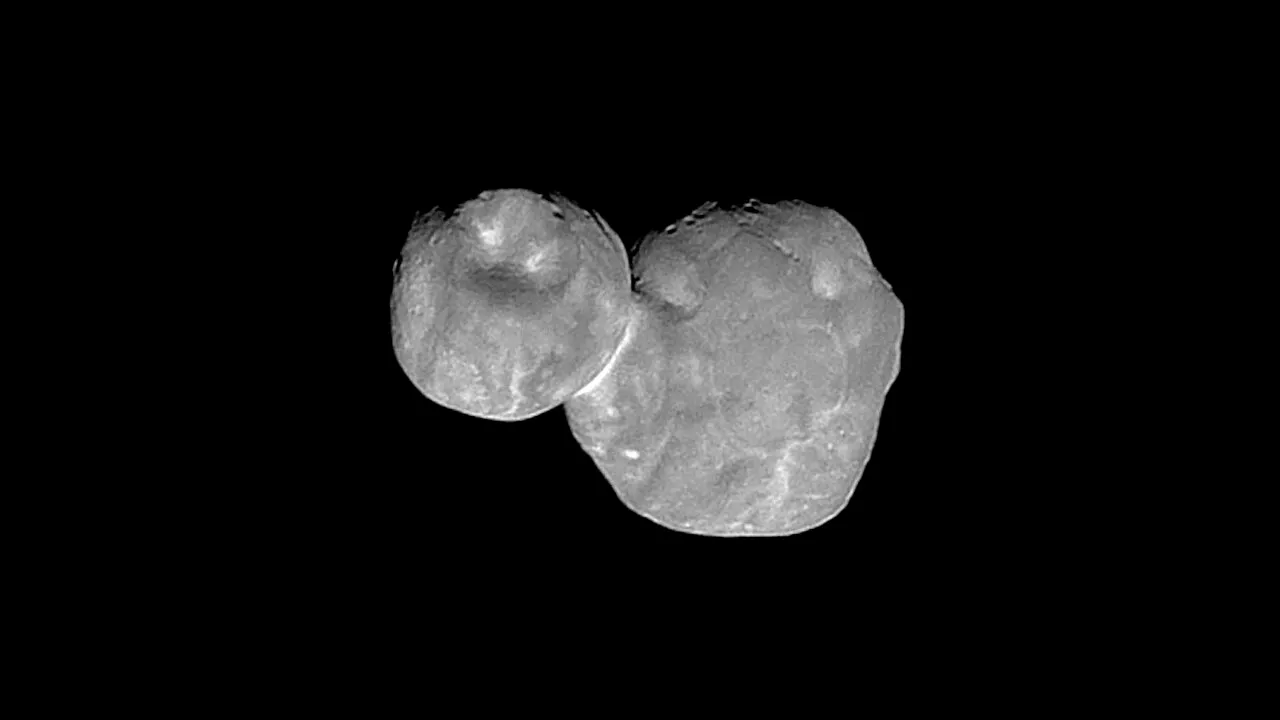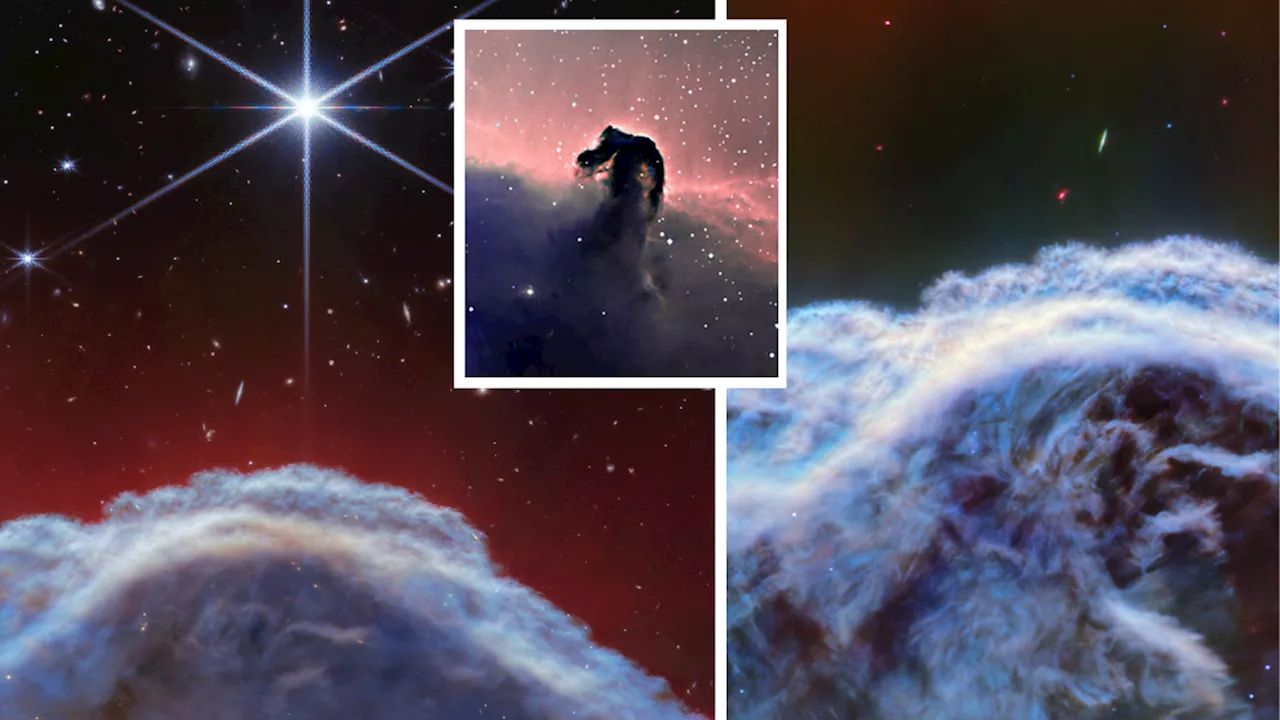Robert Lea is a science journalist in the U.K. whose articles have been published in Physics World, New Scientist, Astronomy Magazine, All About Space, Newsweek and ZME Science. He also writes about science communication for Elsevier and the European Journal of Physics. Rob holds a bachelor of science degree in physics and astronomy from the U.K.
The James Webb Space Telescope has captured incredibly sharp images of the Horsehead Nebula, one of the most iconic celestial bodies in the sky over Earth. The new images show the Horsehead Nebula as turbulent waves of gas rising from the western side of Orion B, a star-forming molecular cloud located 1,300 light-years from Earth in the an image of part of the Horsehead nebula as seen by the JWST's NIRCam instrument. another region visualised by The JWST instrument MIRI .
This won't last forever, though. Scientists estimate that in around 5 million years, even this pillar of denser matter will be gone. , G. Anselmi, NASA, ESA, and the Hubble Heritage Team , ESA/Webb, CSA, K. Misselt and A. Abergel , M. Zamani )instrument was able to capture a small portion of the Horsehead Nebula close-up. This results in it appearing as a curved wall of thick, smoky gas and dust with distant stars and galaxies over it.
The Horsehead Nebula is a photon-dominated region , an area of space where young massive stars warm up the gas and dust between stars. These cold clouds exist between hotter ionized gas closer to the. In PDRs, these stars impact the chemistry of this gas and dust with their ultraviolet light emissions. PDRs are found between stars where gas is dense enough to resist ionization but is still not too dense to allow ultraviolet light to pass through it.
United States Latest News, United States Headlines
Similar News:You can also read news stories similar to this one that we have collected from other news sources.
 The Details Are Unreal in New Webb Image of Famous Horsehead NebulaThe telescope captured an incredibly intricate, close-up view of one of the most famous celestial objects.
The Details Are Unreal in New Webb Image of Famous Horsehead NebulaThe telescope captured an incredibly intricate, close-up view of one of the most famous celestial objects.
Read more »
![]() Webb captures iconic Horsehead Nebula in unprecedented detailThe NASA/ESA/CSA James Webb Space Telescope has captured the sharpest infrared images to date of one of the most distinctive objects in our skies, the Horsehead Nebula. These observations show a part of the iconic nebula in a whole new light, capturing its complexity with unprecedented spatial resolution.
Webb captures iconic Horsehead Nebula in unprecedented detailThe NASA/ESA/CSA James Webb Space Telescope has captured the sharpest infrared images to date of one of the most distinctive objects in our skies, the Horsehead Nebula. These observations show a part of the iconic nebula in a whole new light, capturing its complexity with unprecedented spatial resolution.
Read more »
 James Webb captures the edge of the beautiful Horsehead NebulaA new image from the James Webb Space Telescope shows the sharpest infrared view to date of a portion of the famous Horsehead Nebula.
James Webb captures the edge of the beautiful Horsehead NebulaA new image from the James Webb Space Telescope shows the sharpest infrared view to date of a portion of the famous Horsehead Nebula.
Read more »
 Buried in the Cat's Paw Nebula lies one of the largest space molecules ever seenRobert Lea is a science journalist in the U.K. whose articles have been published in Physics World, New Scientist, Astronomy Magazine, All About Space, Newsweek and ZME Science. He also writes about science communication for Elsevier and the European Journal of Physics. Rob holds a bachelor of science degree in physics and astronomy from the U.K.
Buried in the Cat's Paw Nebula lies one of the largest space molecules ever seenRobert Lea is a science journalist in the U.K. whose articles have been published in Physics World, New Scientist, Astronomy Magazine, All About Space, Newsweek and ZME Science. He also writes about science communication for Elsevier and the European Journal of Physics. Rob holds a bachelor of science degree in physics and astronomy from the U.K.
Read more »
 Distant 'space snowman' unlocks mystery of how some dormant deep space objects become 'ice bombs'A new study is shaking up what scientists thought they knew about distant objects in the far reaches of the solar system, starting with an object called the space snowman.
Distant 'space snowman' unlocks mystery of how some dormant deep space objects become 'ice bombs'A new study is shaking up what scientists thought they knew about distant objects in the far reaches of the solar system, starting with an object called the space snowman.
Read more »
SwRI building space fueling station for Astroscale, Space ForceAstroscale awarded Southwest Research Institute a roughly $17 million subcontract to build a spacecraft capable of refueling other craft in orbit.
Read more »
